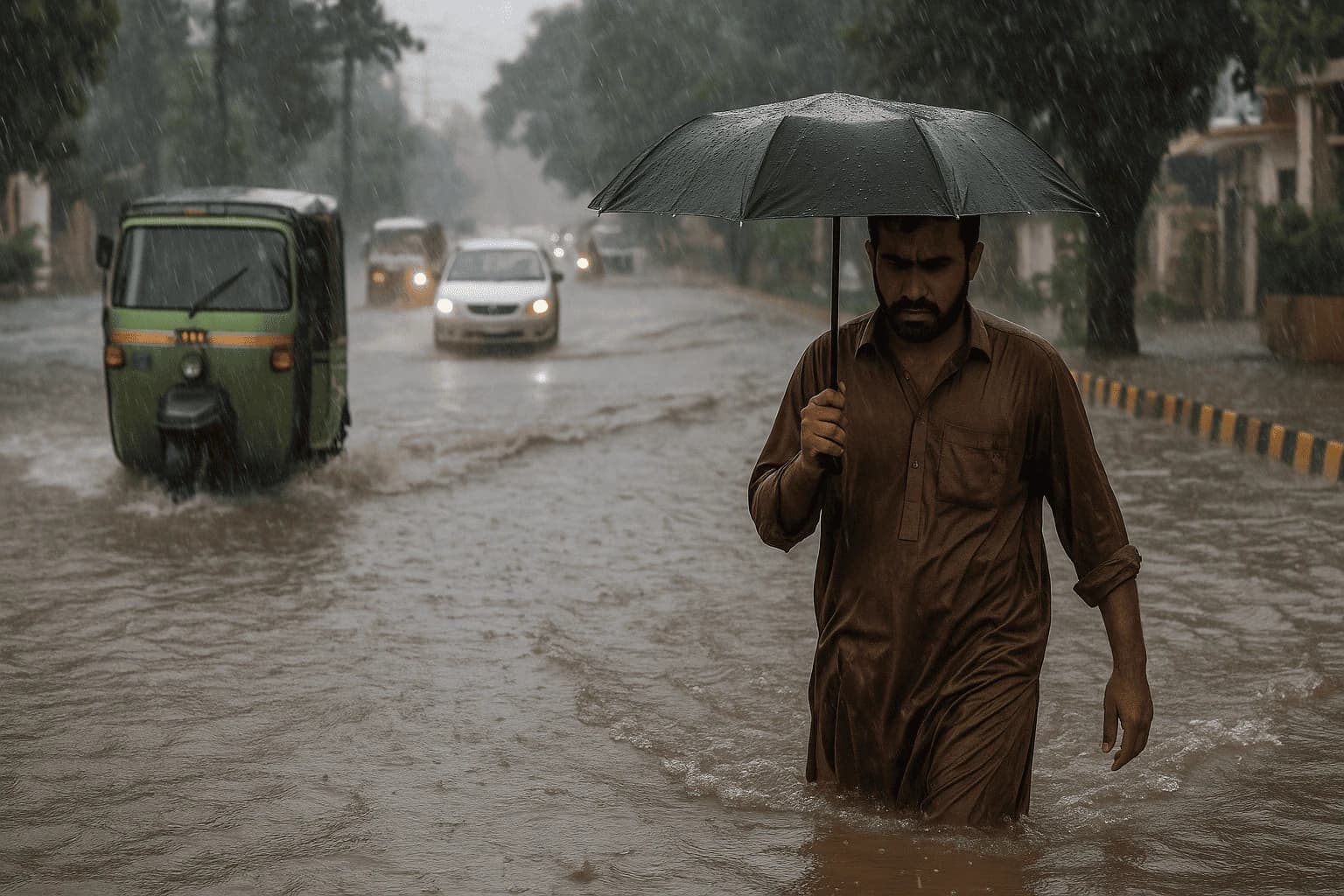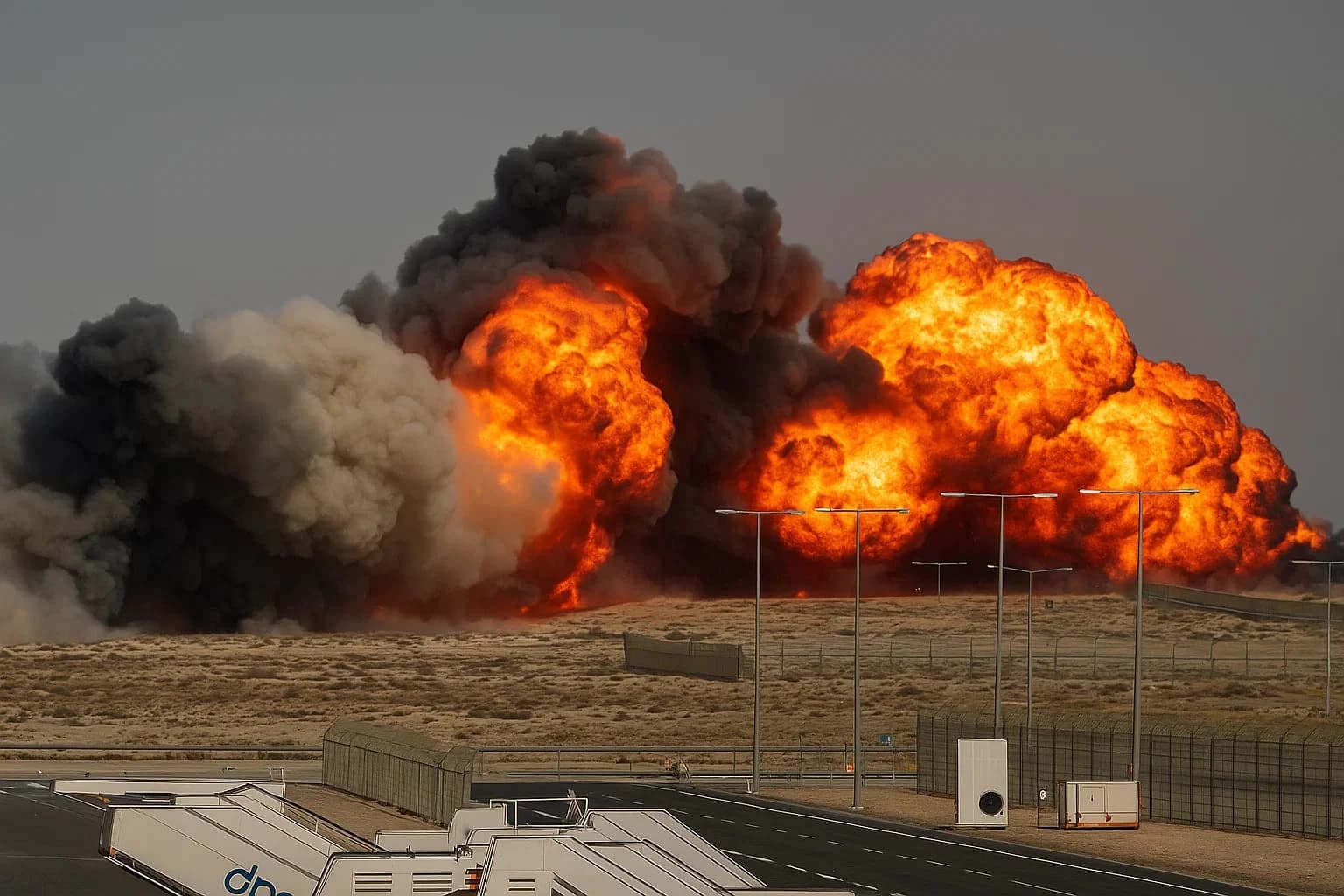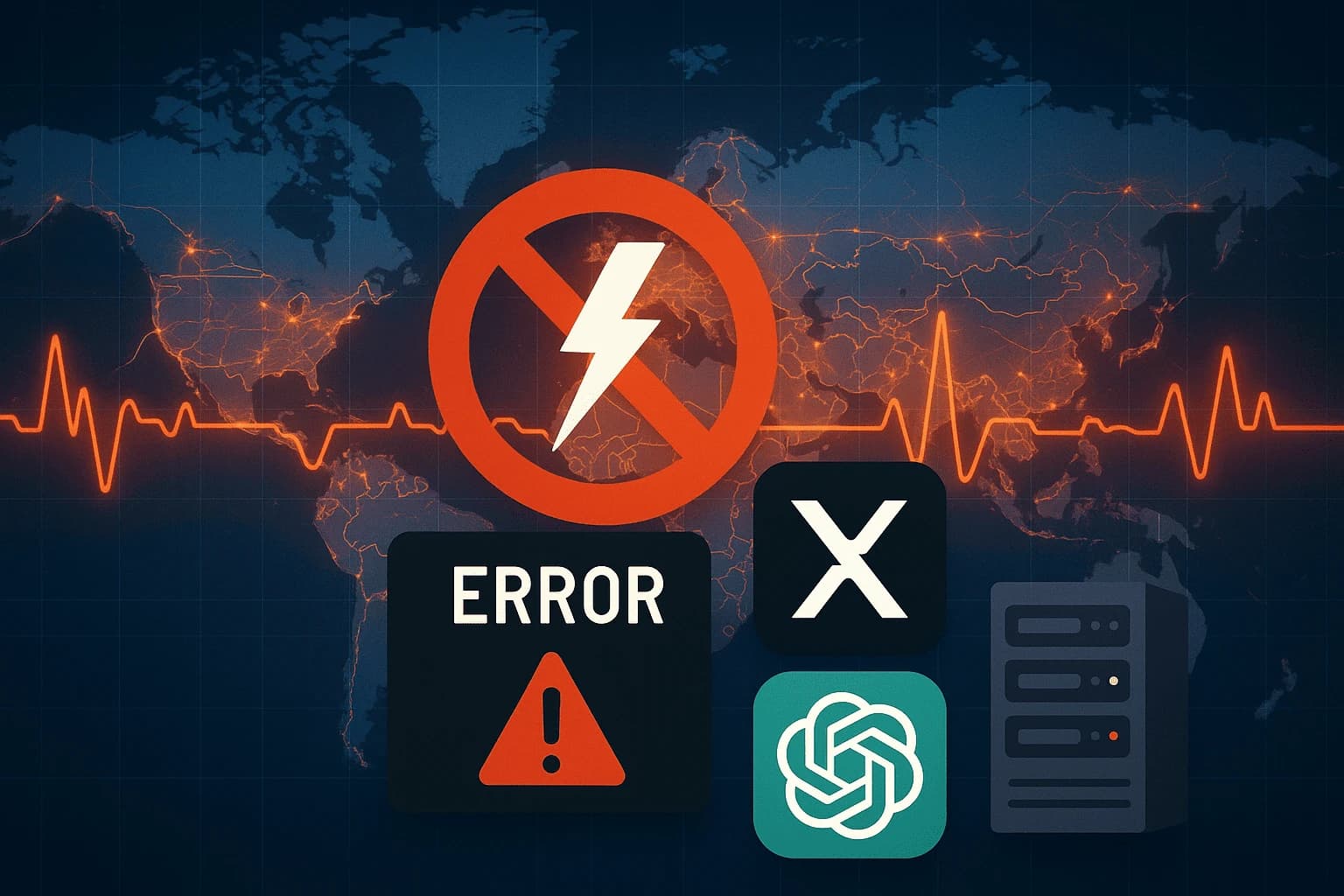© 2025 Roz UpdatesbyTETRA SEVEN

* All product/brand names, logos, and trademarks are property of their respective owners.
Pakistan is currently bracing for a powerful monsoon season in 2025. From Karachi to Kashmir, heavy rains have already started making headlines, bringing with them not just much-needed relief from the scorching summer heat, but also the growing threat of flash floods, urban inundation, and weather-related emergencies. With rainfall predicted to continue well into the coming weeks, the situation is becoming increasingly critical.
The Pakistan Meteorological Department (PMD) has issued several updates, warning of intense rainfall, especially in parts of Punjab, Khyber Pakhtunkhwa (KP), and the northern mountainous regions. In cities like Lahore and Karachi, where drainage systems are already under pressure, even a short spell of rain is enough to cause massive traffic jams, electricity breakdowns, and waterlogging. These events aren't just inconvenient—they’re dangerous.
The National Disaster Management Authority (NDMA) has also ramped up its alerts, cautioning citizens to prepare for potential flash floods and landslides. Remote areas like Swat, Chitral, and Gilgit-Baltistan face heightened risk due to glacial melt and unpredictable weather patterns.
Amid this unfolding crisis, it’s crucial for people to stay informed, act proactively, and prioritize safety above all. Whether you're living in a flood-prone area or traveling across Pakistan during the rainy season, knowing what to do—and what to avoid—can make a life-saving difference.
In this comprehensive blog, we’ll break down the current monsoon scenario, identify the most affected regions, and offer practical, easy-to-follow safety tips to help you and your loved ones stay protected during this critical time.
As of late June 2025, Pakistan is experiencing an intense start to its monsoon season, marked by widespread rainstorms and flash floods across several regions. The Pakistan Meteorological Department (PMD) has issued continuous updates forecasting heavy downpours in both urban and rural parts of the country. In response, the National Disaster Management Authority (NDMA) and local agencies have activated emergency protocols to prepare for rising water levels, landslides, and infrastructure disruptions. From the southern coastlines of Karachi to the mountain valleys of Gilgit-Baltistan, communities are being impacted in different ways depending on local geography and drainage capabilities.
The Pakistan Meteorological Department (PMD) has predicted above-normal rainfall for the 2025 monsoon season, especially during July and August. According to the latest PMD bulletins, southern Punjab, upper Sindh, and northern Khyber Pakhtunkhwa are expected to receive the heaviest downpours. Monsoon systems moving from the Bay of Bengal are likely to bring persistent rain, accompanied by gusty winds and thunderstorms.
Flash flood warnings have been issued for low-lying areas, particularly around riverbanks and urban centers with inadequate drainage infrastructure. Cities like Multan, Faisalabad, and Rawalpindi are already witnessing water accumulation after short rain spells, prompting concerns about longer, more intense rainfall events in the coming weeks.
Monsoon rains are impacting both urban centers and rural areas across Pakistan. Here's a breakdown of key cities and regions currently facing the brunt of the monsoon:
| Region/City | Issues Reported | Severity |
|---|---|---|
| Karachi | Urban flooding, power outages, traffic paralysis | High |
| Lahore | Waterlogging, blocked drains, dengue outbreaks | Moderate–High |
| Islamabad/Rawalpindi | Flash floods in low-lying sectors, landslides in Margalla Hills | Moderate |
| Peshawar | Sewer overflow, flooding in old city areas | Moderate |
| Multan | Rain-damaged infrastructure, road collapse incidents | High |
| Quetta | Flooding in low-income neighborhoods, poor drainage response | Moderate |
| Faisalabad | Heavy rainfall affecting transportation and markets | Moderate |
| Swat & Chitral | Flash floods, river overflow, landslides | Very High |
| Gilgit-Baltistan | Glacial lake outburst floods (GLOF) threats, blocked roads | Very High |
| Dera Ghazi Khan | Overflowing hill torrents, damaged bridges | High |
| Sialkot | Streets under water, halted business activity | Moderate |
| Sukkur & Larkana | Overflowing canals, agricultural land submerged | Moderate |
| Bahawalpur | Rural flooding, crop damage | Moderate |
These areas are either experiencing heavy rainfall already or are under active alert based on PMD forecasts. Emergency shelters have been activated in some districts, and citizens are advised to follow local news for updated evacuation notices.
The National Disaster Management Authority (NDMA) is working closely with local governments to issue timely flood alerts, coordinate rescue operations, and dispatch relief supplies. Through digital platforms, SMS alerts, and community engagement, the NDMA has urged citizens to stay away from rivers and nullahs, avoid unnecessary travel, and report emergencies through official helplines.
Local authorities in high-risk areas have also begun clearing drainage channels, relocating vulnerable families, and pre-positioning medical and food supplies to mitigate disaster impacts.
As monsoon rains sweep across the country, staying prepared can mean the difference between safety and disaster. Floods, power outages, waterborne illnesses, and blocked roads are common challenges during this season. While authorities like the NDMA are working to minimize the damage, it’s essential for individuals and families to take personal precautions. This section offers practical, easy-to-follow tips that can help you stay safe before, during, and after the rains—along with critical health advice and must-have emergency resources.
Floods and heavy rains can turn deadly in minutes, especially in low-lying or poorly drained areas. Here's how to stay safe:
Before the Flood
Keep an emergency bag ready with essentials: torch, batteries, water, dry food, and basic medicines.
Secure your home: clean drains, seal electric connections, and elevate important belongings.
Stay updated with alerts from PMD, NDMA, or your local disaster management office.
During the Flood
Avoid walking or driving through flooded roads—even 6 inches of moving water can knock you down.
Turn off electricity and gas connections if water enters your home.
Stay indoors, preferably on higher floors, and keep emergency contacts handy.
After the Flood
Do not return to flooded areas until authorities confirm it's safe.
Watch for snakes, open electric wires, and contaminated water.
Disinfect everything that came into contact with floodwater.
Monsoon season often brings a surge in waterborne and vector-borne diseases like cholera, typhoid, and dengue. To stay healthy:
Boil drinking water or use purification tablets.
Use mosquito repellents and keep surroundings clean to avoid dengue outbreaks.
Eat fresh, home-cooked meals and avoid roadside food stalls during heavy rains.
Dispose of garbage properly to prevent blocked drains and stagnant water accumulation.
Hospitals in major cities like Karachi, Lahore, and Islamabad have already reported an increase in gastrointestinal and respiratory infections due to poor sanitation after rains.
A well-prepared emergency kit can save lives. Make sure yours includes:
Torch and extra batteries
First-aid supplies
Clean drinking water
Non-perishable food
Power bank and phone charger
Basic medicines (painkillers, ORS, antiseptics)
Copies of important documents in a waterproof pouch
Important Emergency Helplines (Pakistan):
NDMA: 051-9205037
PMD Weather Updates: 051-111-638-638
Rescue 1122: For all major cities
Edhi Foundation: 115
Pakistan Red Crescent: 1030
Keep these numbers saved in your phone and share them with your family and neighbors.
Pakistan’s monsoon season is as beautiful as it is dangerous. While the rains bring a welcome break from the heat and a boost to agriculture, they also expose the country’s vulnerabilities—be it weak infrastructure, unplanned urban development, or lack of disaster preparedness. The 2025 monsoon has already proven challenging, with several regions flooded, lives disrupted, and the threat of disease looming.
But while we cannot control the weather, we can control how we respond to it. Staying alert through official channels like the Pakistan Meteorological Department (PMD) and the National Disaster Management Authority (NDMA), preparing emergency kits, and following basic health and safety guidelines can go a long way in protecting yourself and your family.
If you live in or near affected areas, consider helping neighbors, checking on the elderly, and sharing verified information. Your proactive steps could prevent harm and even save lives.
🌧️ Let’s face this monsoon with care, courage, and community. If you found this information helpful, please share it with your friends, family, and community groups. Together, we can stay safer, smarter, and more prepared.

22 November 2025

18 November 2025
No comments yet. Be the first to comment!